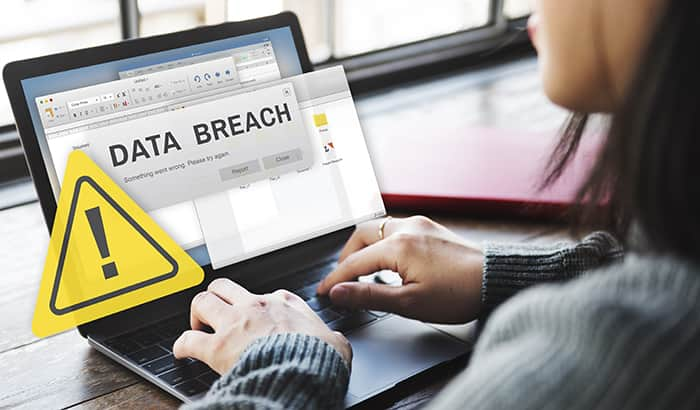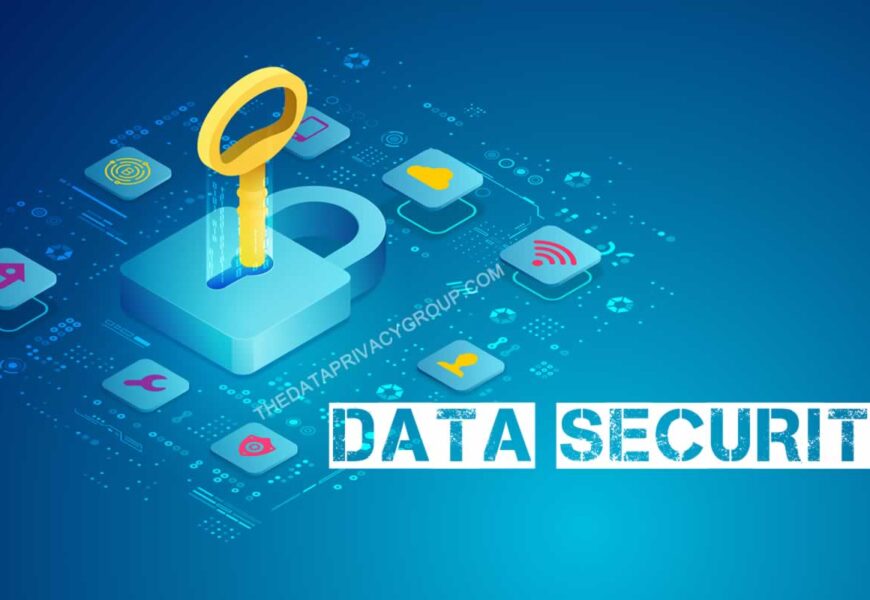Securing the Digital Fortress: Safeguarding Your Data in the Age of Cyber Threats
KEY TAKEAWAYS:
- Cybersecurity and data privacy are crucial in the digital age, with data breaches posing significant risks to sensitive information.
- Understanding the legal aspects of data breaches and privacy rights is essential for individuals and organizations.
- Data breaches can result from various causes and have severe consequences, including financial loss and damage to reputation.
- Compliance with data protection laws and regulations is vital to avoid legal liabilities in case of a data breach.
- Effective incident response planning and communication are critical in mitigating the impact of data breaches and protecting affected parties’ privacy rights.
- Transparent communication and timely notifications can help rebuild trust and demonstrate commitment to data privacy.
- Navigating the legal landscape of data breaches empowers organizations to proactively address vulnerabilities and protect data security effectively.
In today’s digital age, the vast amount of data collected and stored electronically has made cybersecurity and data privacy critical concerns for individuals and organizations alike. The increasing frequency and sophistication of data breaches pose significant challenges to safeguarding sensitive information. Alongside this, the evolving landscape of data protection laws and regulations adds complexity to the legal aspects surrounding data breaches and privacy rights. Understanding these legal intricacies is crucial for effectively navigating the aftermath of data breaches and protecting individuals’ privacy rights.
This article delves into the multifaceted world of cybersecurity and data privacy, focusing on the legal dimensions involved in data breaches and privacy incidents. It explores the fundamental principles of cybersecurity, the types and causes of data breaches, and the far-reaching consequences for both individuals and organizations. Additionally, it analyzes the legal landscape surrounding data protection, responsibilities, liabilities, and the reporting and notification requirements in the event of a data breach. Moreover, the article provides valuable insights into the vital steps organizations should take when responding to data breaches and the critical role of transparent communication in rebuilding trust and safeguarding privacy rights.
Cybersecurity and Data Breaches

Cybersecurity is the practice of protecting computer systems, networks, and sensitive data from unauthorized access, cyberattacks, and data breaches. It involves a combination of technologies, processes, and practices aimed at safeguarding digital assets and ensuring the confidentiality, integrity, and availability of information. Cybersecurity measures are crucial in defending against various threats, including malware, ransomware, phishing attacks, and other sophisticated cyber risks that can compromise personal and organizational data.
Types and Causes of Data Breaches
Data breaches can occur through various means and have different underlying causes. Some common types of data breaches include:
- Hacking: Unauthorized individuals gain access to systems or databases by exploiting vulnerabilities or weak security measures.
- Insider Threats: Data breaches may occur due to intentional or unintentional actions of employees or insiders with access to sensitive information.
- Lost or Stolen Devices: Laptops, smartphones, or other devices containing sensitive data can be lost or stolen, leading to potential data exposure.
- Phishing Attacks: Cybercriminals use deceptive emails or messages to trick individuals into revealing sensitive information, such as login credentials or financial details.
Consequences of Data Breaches for Individuals and Organizations
The impact of data breaches can be far-reaching and pose significant consequences for both individuals and organizations:
- Financial Loss: Data breaches can lead to financial damages, including theft of funds or loss of revenue due to disrupted business operations.
- Identity Theft: Stolen personal information can be used for identity theft, leading to fraudulent activities and financial harm to affected individuals.
- Reputation Damage: Organizations that suffer data breaches may experience reputational damage, loss of customer trust, and negative publicity.
- Legal Consequences: Data breaches may result in legal liabilities, regulatory fines, and potential lawsuits, especially if data protection laws are violated.
- Loss of Intellectual Property: Breaches that expose proprietary information can harm innovation and competitiveness for organizations.
As cybersecurity threats continue to evolve, understanding the importance of robust security measures and data breach prevention becomes crucial to safeguarding sensitive information and protecting the interests of both individuals and organizations. Being proactive in implementing effective cybersecurity practices is essential in mitigating the risks associated with data breaches and maintaining data privacy and security.
Legal Aspects of Data Breaches
In today’s digital age, data breaches have become a prevalent concern for individuals and businesses alike. Understanding the legal aspects surrounding data breaches is crucial for ensuring compliance and protecting the rights of those affected. Numerous data protection laws and regulations have been enacted globally to safeguard personal information and hold organizations accountable for securing sensitive data.
- General Data Protection Regulation (GDPR): The GDPR, applicable in the European Union (EU) and European Economic Area (EEA), sets strict standards for data protection and privacy. It grants individuals greater control over their personal data and requires organizations to implement robust security measures and promptly report data breaches.
- California Consumer Privacy Act (CCPA): The CCPA provides California residents with specific privacy rights and requires businesses handling their data to disclose their data collection practices and security measures. It also obligates businesses to inform consumers promptly in the event of a data breach.
- Health Insurance Portability and Accountability Act (HIPAA): HIPAA is a US federal law that protects the privacy and security of individuals’ health information. Covered entities, such as healthcare providers and health insurers, must implement safeguards to prevent data breaches and notify affected individuals in case of any incidents.
Responsibilities and Liabilities for Data Breach Incidents

When a data breach occurs, various parties may be held responsible, depending on their roles in handling the data and the circumstances of the breach:
- Organizations and Businesses: Organizations that collect and process personal data have a duty to implement adequate security measures to prevent data breaches. Failure to do so can result in legal liabilities, fines, and damage to their reputation.
- Data Controllers and Processors: Under the GDPR, data controllers (entities determining the purpose and means of data processing) and data processors (entities processing data on behalf of data controllers) both share responsibilities for protecting personal data and reporting breaches.
- Employees and Insiders: Internal threats, such as negligent or malicious actions by employees or insiders, can also lead to data breaches. Organizations should enforce strong access controls and security protocols to minimize these risks.
Reporting and Notification Requirements for Data Breaches
In the aftermath of a data breach, organizations must take swift action to comply with reporting and notification requirements, ensuring that affected individuals are informed promptly:
- Data Breach Notifications: Data protection laws often require organizations to notify affected individuals about the breach, including details of the data exposed, potential risks, and steps they can take to protect themselves.
- Regulatory Authorities: Depending on the jurisdiction and the severity of the breach, organizations may be required to report data breaches to relevant regulatory authorities within a specified timeframe.
- Contractual Obligations: In some cases, businesses may have contractual obligations with partners or clients that mandate reporting data breaches as part of their agreements.
By understanding the legal implications of data breaches and staying compliant with data protection laws, organizations can effectively address and mitigate the consequences of these incidents. Implementing robust data security measures and promptly reporting breaches are essential steps in safeguarding individuals’ data and maintaining trust with customers and stakeholders.
Protecting Data Privacy Rights
In an increasingly interconnected world, data privacy has become a fundamental concern for individuals and organizations alike. Understanding privacy rights and the laws governing data protection is vital for safeguarding sensitive information and maintaining trust with customers and stakeholders.
- Right to Privacy: The right to privacy is a fundamental human right recognized by various international agreements and national constitutions. It grants individuals the authority to control the collection, use, and disclosure of their personal information.
- Data Protection Laws: Many countries have enacted data protection laws to regulate the handling of personal data. For instance, the General Data Protection Regulation (GDPR) in the European Union (EU) provides comprehensive data protection standards for individuals within the EU and European Economic Area (EEA).
- Children’s Online Privacy Protection Act (COPPA): The COPPA is a US federal law that safeguards the privacy of children under 13 years old by requiring parental consent for the collection of their personal information online.
Safeguarding Personal Data from Unauthorized Access
To protect data privacy effectively, individuals and organizations must adopt robust security measures to prevent unauthorized access to sensitive information:
- Strong Passwords and Authentication: Using strong and unique passwords, along with two-factor authentication, adds an extra layer of protection to prevent unauthorized access.
- Data Encryption: Encrypting data ensures that even if it is intercepted, it remains unreadable and unusable to unauthorized users.
- Firewalls and Intrusion Detection Systems: Implementing firewalls and intrusion detection systems helps monitor and block potential threats attempting to access private data.
- Employee Training: Educating employees about data security best practices and the potential risks of data breaches is crucial in preventing accidental disclosures.
Data Privacy Compliance and Best Practices
Ensuring data privacy compliance requires adopting best practices and staying updated with evolving regulations:
- Privacy Policy: Organizations handling personal data should have a transparent and comprehensive privacy policy that informs users about data collection, use, and protection practices.
- Data Minimization: Collecting and retaining only necessary data reduces the risk of data exposure and minimizes the impact of potential breaches.
- Regular Data Audits: Conducting periodic data audits helps identify vulnerabilities and ensures compliance with data protection laws.
- Consent and Opt-Out Options: Obtaining explicit consent from individuals before collecting their data and providing opt-out options offer users greater control over their information.
- Privacy by Design: Incorporating privacy considerations into the development of products and services ensures privacy is considered from the outset.
Protecting data privacy rights involves a collaborative effort from individuals and organizations. By understanding privacy rights, implementing robust security measures, and adhering to data privacy laws and best practices, individuals and businesses can build a safer and more trustworthy digital landscape.
Addressing Privacy Concerns in the Digital Age

In the modern digital landscape, individuals are increasingly connected through various online platforms and devices. However, the convenience and interconnectedness come with potential risks to personal privacy. Online data collection and tracking have become pervasive, raising concerns about how personal information is used and shared without individuals’ consent.
- Data Breaches and Identity Theft: The more data collected and stored online, the higher the risk of data breaches. Hackers target databases to obtain sensitive information, leading to identity theft, financial fraud, and other forms of cybercrime.
- Targeted Advertising and Profiling: Online platforms and advertisers use data collected from users to create detailed profiles for targeted advertising. This practice can feel invasive and may lead to a lack of control over the information shared with third parties.
- Social Engineering and Phishing Attacks:Cybercriminals leverage personal data obtained through online tracking to craft sophisticated social engineering attacks, such as phishing emails. This manipulation exploits individuals’ trust to obtain sensitive information.
Balancing Convenience and Privacy in the Digital World
The digital world offers unparalleled convenience, allowing individuals to access information and services with a few clicks. However, striking a balance between convenience and privacy is essential to protect personal information.
- Informed Consent: Individuals must be aware of the data collection practices of the platforms they use and give informed consent for their data to be collected and processed.
- Data Minimization: Companies should adopt data minimization principles, collecting only the necessary data required for specific purposes to reduce the risk of privacy breaches.
- Transparent Policies: Organizations should provide clear and accessible privacy policies, outlining their data collection practices and how users’ information is used and shared.
Privacy Settings and Controls for Personal Devices and Accounts
To empower users in safeguarding their privacy, manufacturers and service providers offer privacy settings and controls for personal devices and accounts:
- Privacy Settings on Social Media: Social media platforms allow users to customize privacy settings, controlling who can view their posts, personal information, and friend lists.
- Two-Factor Authentication (2FA): Enabling 2FA adds an extra layer of security to online accounts, requiring users to provide a secondary form of verification during login attempts.
- VPN and Encrypted Connections: Using a Virtual Private Network (VPN) and encrypted connections can enhance online privacy by protecting internet traffic from potential eavesdropping.
The digital age has brought unprecedented opportunities, but it has also raised privacy concerns. By understanding the risks, taking control of privacy settings, and being cautious about data sharing, individuals can navigate the digital world more securely and preserve their privacy rights. Balancing convenience and privacy while embracing technology empowers users to enjoy the benefits of the digital age without compromising their personal information’s integrity.
Cybersecurity Measures and Best Practices
By implementing these cybersecurity measures and best practices, organizations can significantly enhance their data protection efforts and mitigate the risk of falling victim to cyber threats. Building a cybersecurity-aware culture and staying vigilant against evolving threats are essential steps in safeguarding sensitive data and preserving the reputation of the business.
Implementing Strong Security Measures for Data Protection
In today’s technologically advanced world, cybersecurity has become a top priority for organizations of all sizes. Protecting sensitive data from cyber threats is crucial to maintaining trust with customers and safeguarding business operations. Here are some essential security measures for data protection:
- Firewalls and Intrusion Detection Systems: Deploying firewalls and intrusion detection systems is the first line of defense against unauthorized access. Firewalls monitor incoming and outgoing network traffic, while intrusion detection systems identify and respond to potential security breaches.
- Data Encryption: Encrypting sensitive data ensures that even if it is intercepted, it remains unreadable to unauthorized parties. Implementing encryption for data at rest and in transit adds an extra layer of protection.
- Multi-Factor Authentication (MFA): Requiring multi-factor authentication for accessing critical systems and data significantly reduces the risk of unauthorized access. MFA combines something the user knows (password), something the user has (smartphone), and something the user has (fingerprint) for enhanced security.
- Regular Software Updates and Patching: Keeping software and operating systems up to date with the latest security patches is essential for addressing known vulnerabilities and preventing exploitation by cybercriminals.
- Network Segmentation: Dividing the network into smaller segments and controlling access between them can limit the impact of a cyberattack by preventing lateral movement within the network.
Training Employees for Cybersecurity Awareness
Human error remains one of the most significant cybersecurity risks. Educating employees about cybersecurity best practices is crucial to building a strong defense against cyber threats. Here’s how organizations can promote cybersecurity awareness among their workforce:
- Security Training Programs: Conduct regular cybersecurity training programs to familiarize employees with common threats, such as phishing, social engineering, and ransomware.
- Recognizing Phishing Attempts: Teach employees how to identify phishing emails and avoid clicking on malicious links or providing sensitive information.
- Safe Internet Usage: Encourage employees to practice safe internet browsing habits, avoid visiting untrusted websites, and be cautious while downloading files or attachments.
- Password Hygiene: Emphasize the importance of strong and unique passwords for each account and the need to change them regularly.
Assessing and Mitigating Cyber Risks in Business Operations
Understanding and managing cyber risks are crucial to ensuring the resilience of an organization’s operations. Here’s how businesses can assess and mitigate cyber risks effectively:
- Cybersecurity Risk Assessment: Conduct regular risk assessments to identify potential vulnerabilities and evaluate the impact of a cyber incident on business operations.
- Incident Response Plan: Develop a comprehensive incident response plan to address and mitigate cyber threats effectively when they occur. This plan should outline roles, responsibilities, and communication protocols during a cyber incident.
- Regular Backups: Implement a robust data backup and recovery system to ensure business continuity in the event of data loss due to cyber incidents.
- Continuous Monitoring: Employ continuous monitoring tools and techniques to detect and respond to cyber threats in real-time.
Responding to Data Breaches and Privacy Incidents

Having a well-prepared incident response plan and following the appropriate legal steps, organizations can respond effectively to data breaches and privacy incidents. Timely and transparent communication with affected parties is key to rebuilding trust and protecting individuals’ privacy rights.
Incident Response Planning and Protocols
Data breaches and privacy incidents can cause significant disruptions and damage to an organization’s reputation. Having a well-defined incident response plan is crucial for effectively addressing such incidents and minimizing their impact. Here are the key steps involved in incident response planning:
- Identification and Assessment: The first step is to promptly identify and assess the data breach or privacy incident. This involves determining the scope of the breach, the type of data exposed, and potential risks to affected parties.
- Establishing an Incident Response Team: Forming a dedicated incident response team comprising IT experts, legal counsel, communication specialists, and relevant stakeholders is essential. This team will be responsible for coordinating the response efforts.
- Creating Incident Response Protocols: Developing clear and comprehensive incident response protocols is vital. These protocols should outline the actions to be taken at each stage of the response process, including containment, eradication, recovery, and lessons learned.
Legal Steps to Take After a Data Breach
Seek legal counsel to conduct a thorough legal assessment of the data breach. Understanding the legal implications and obligations is essential in formulating an appropriate response.
Comply with applicable data protection laws and regulations by promptly notifying affected individuals, regulatory authorities, and other relevant stakeholders about the data breach. Provide accurate and transparent information about the incident and the measures being taken to address it.
Preserve all relevant documentation related to the data breach. This includes evidence of the breach, communication with affected parties, and the actions taken to mitigate the incident.
Communicating with Affected Parties and the Public
Communicate openly and transparently with affected individuals about the data breach. Clearly explain what data was compromised, the potential risks they may face, and the steps they can take to protect themselves.
Offer assistance and support to affected individuals, such as credit monitoring services or identity theft protection, if appropriate.
Develop a comprehensive public relations strategy to manage external communications about the data breach. This includes engaging with the media and the public in a proactive and responsible manner.
As technology continues to advance, the challenges of maintaining robust cybersecurity and protecting data privacy remain at the forefront of modern society. Data breaches can have severe consequences, leading to financial loss, damage to reputation, and potential legal liabilities. In such a complex and dynamic environment, understanding the legal aspects of data breaches and privacy rights is paramount.
This article has shed light on the intricate world of cybersecurity and data privacy, emphasizing the importance of staying vigilant in safeguarding sensitive information. By comprehending the legal landscape and complying with data protection laws, organizations can proactively address potential vulnerabilities and respond swiftly and responsibly to data breaches when they occur.
In the face of a data breach, effective incident response planning, coupled with appropriate legal measures, enables organizations to mitigate the impact and protect the privacy rights of affected individuals. Transparent communication and timely notifications are crucial elements in fostering trust and demonstrating a commitment to data privacy.
By navigating the legal aspects of data breaches and privacy rights with diligence and responsibility, organizations can reinforce their commitment to data security and foster a safer digital environment for all.








